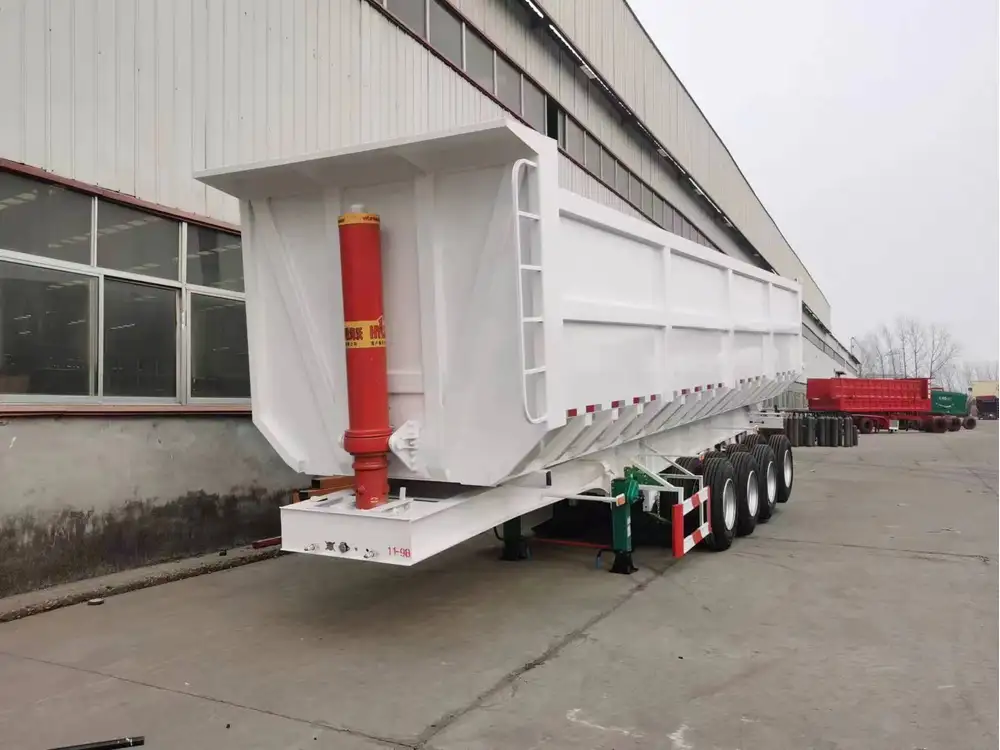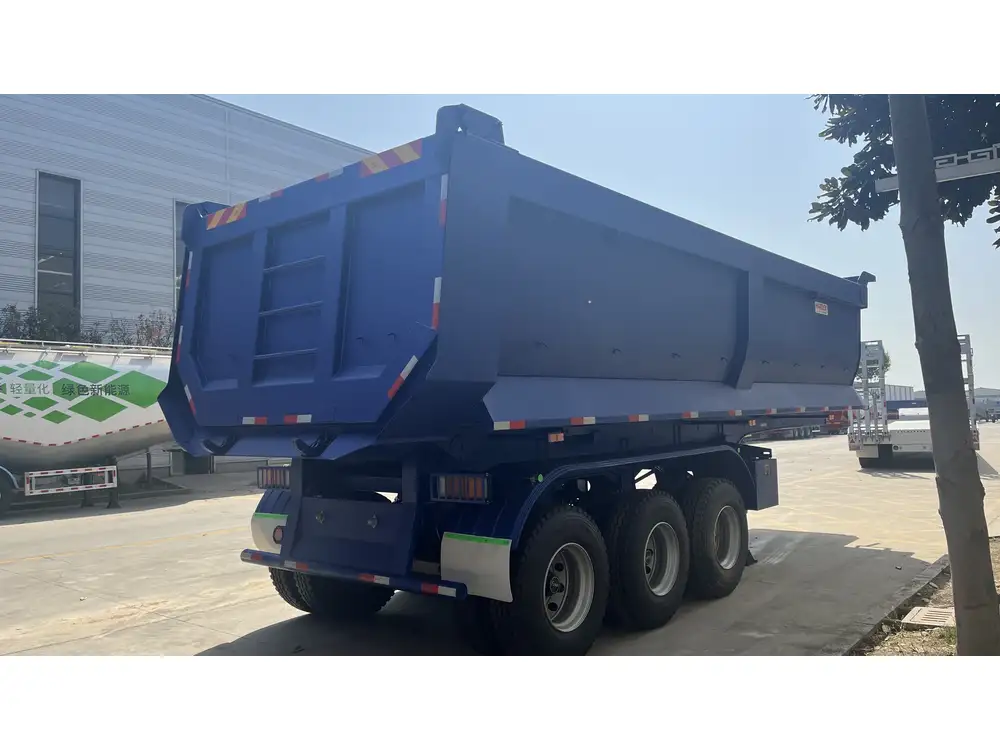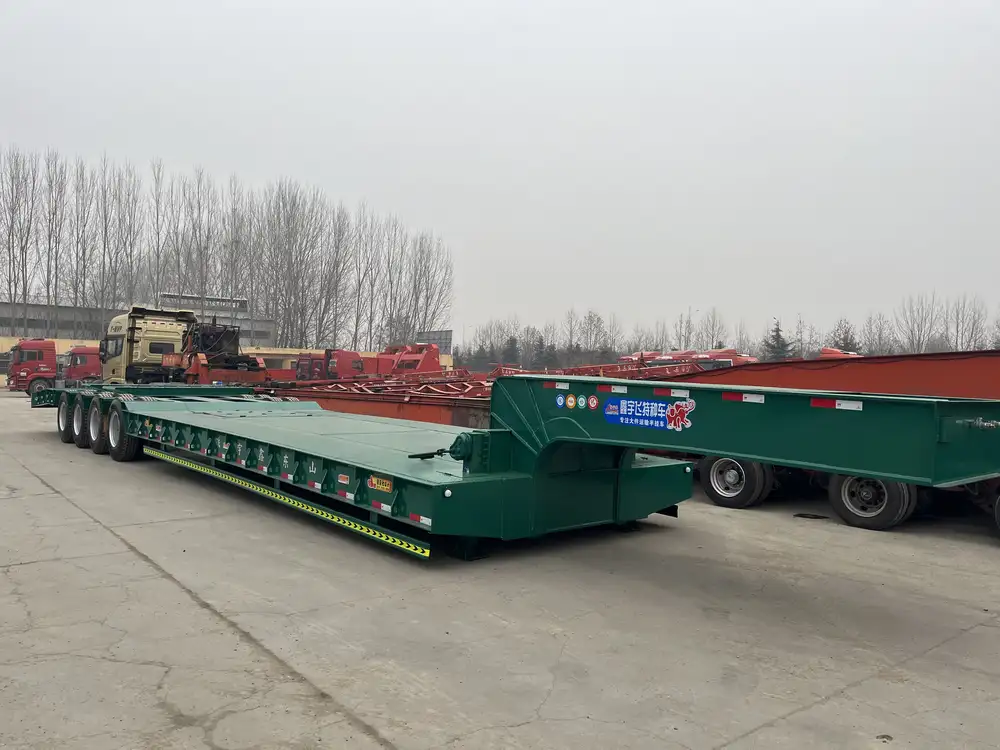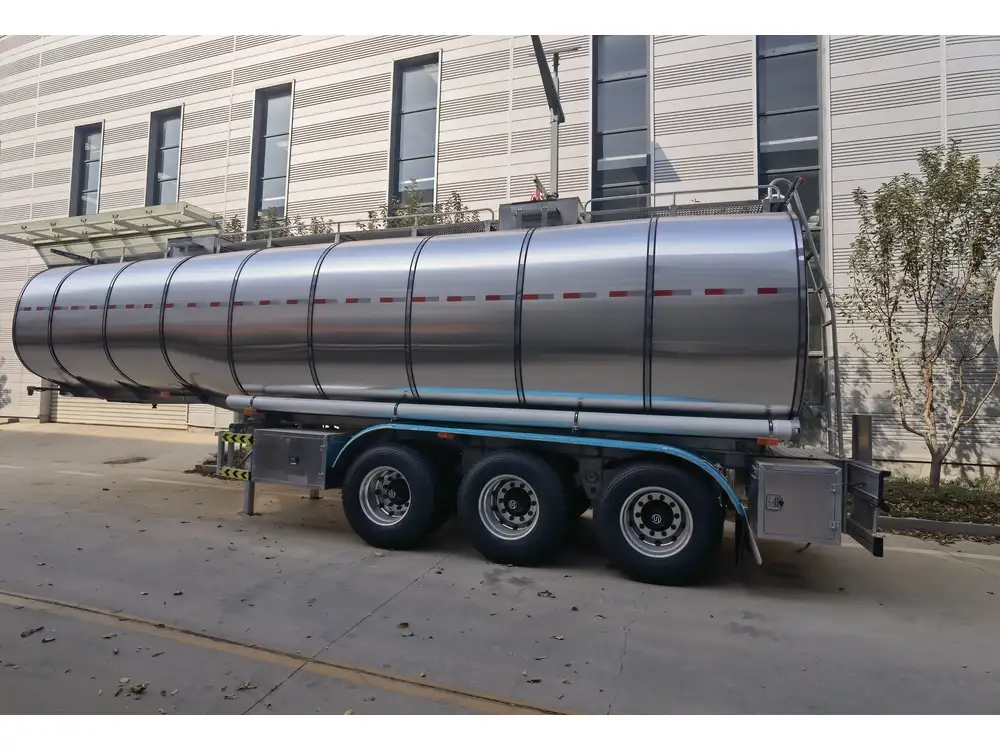Dropping a semi-trailer is a skill that requires precision, experience, and a keen understanding of the mechanics involved. For both new and seasoned drivers, mastering the art of dropping a trailer can significantly enhance safety and efficiency in operations. This guide aims to provide a thorough exploration of the steps, techniques, and considerations necessary for effectively dropping a trailer semi.
Understanding the Fundamentals of Dropping a Trailer
Before we delve into the specific steps, it is essential to familiarize ourselves with the components involved in the trailer drop process. A semi-trailer consists of several key parts:
| Component | Description |
|---|---|
| Fifth Wheel | A coupling device mounted on the tractor that connects to the kingpin of the trailer. |
| Kingpin | The pin that connects the trailer to the tractor, seated in the fifth wheel. |
| Landing Gear | The adjustable legs at the front of the trailer that support it upon disconnecting from the tractor. |
| Trailer Brake System | A system that ensures the trailer is properly secured when stationary. |
Understanding these components is crucial as they play specific roles during the dropping process.
Step-by-Step Guide on How to Drop a Trailer Semi

1. Prepare for the Drop
Preparation is key to a successful trailer drop. Before you begin, conduct a pre-drop inspection and checklist.
Pre-Drop Inspection Checklist:
- Check the surrounding environment for any obstacles or hazards.
- Ensure the trailer is on level ground to prevent rolling.
- Confirm that the trailer brakes are engaged.
- Inspect the fifth wheel to ensure it is properly lubricated and in good condition.
2. Position the Truck and Trailer
The positioning of the truck in relation to the trailer is critical. Follow these guidelines:
Align the Tractor: Position the tractor directly in front of the trailer, keeping the fifth wheel slightly above and aligned with the kingpin. Ensure you have enough space to maneuver the truck without any obstruction in your pivoting radius.
Check Your Clearance: Make sure there is ample clearance between the tractor and the trailer before proceeding. This precaution helps avoid any accidental contact during the drop.
3. Engage the Trailer Brakes
Once the truck is aligned, proceed to engage the trailer brakes:
- Secure the Trailers: Pull the trailer brake lever or activate the air brake system to lock the trailer in place. This action prevents the trailer from rolling away once disconnected.

4. Disconnect the Air Lines
Identify the Air Lines: Locate the tractor’s air supply lines connected to the trailer. Typically, there are two lines: the service line (red) and the emergency line (blue).
Release the Air: To disconnect, first, ensure that the air supply from the tractor is turned off. Carefully uncouple the lines from their connectors. It’s good practice to wear gloves during this process to avoid any potential injuries.
5. Lower the Landing Gear
Activate the Landing Gear: Utilizing the landing gear crank, lower the legs of the trailer to the ground. This should be done slowly and evenly to prevent any sudden shifts in weight distribution.
Ensure Stability: Be attentive during this step to ensure the trailer is stable. If needed, adjust the landing gear to achieve a level position.
6. Uncouple the Fifth Wheel
Position the Tractor: Move the tractor slightly forward until the kingpin clears the fifth wheel. This movement should be slow and controlled.
Activate the Release Mechanism: Depending on the design of the fifth wheel, you may need to pull a release handle or trigger a latch to free the kingpin. Look for any visual indicators that confirm the release.

7. Drive Away Safely
Double-Check the Trailer: Before driving away, ensure that the trailer is stable on its landing gear and that there are no loose items or concerns regarding its position.
Ease out of Position: Gently move the tractor away from the trailer while keeping a safe distance to avoid any potential hazards or contact with the empty trailer.
Important Safety Considerations
Safety should always be the top priority when dropping a semi-trailer. Here are critical safety considerations:
Maintain Situational Awareness: Always be aware of your surroundings when dropping a trailer. Other vehicles, personnel, and obstacles can pose risks.
Use Communication: If working in a team, ensure clear communication between parties involved. Use hand signals or radios to relay information about positioning and readiness.
Wear Proper PPE: Personal protective equipment (PPE) such as safety gloves, reflective vests, and hard hats can prevent injuries during the trailer drop process.
Common Mistakes to Avoid
Even seasoned drivers can make mistakes when dropping a trailer. Here are some common errors to be aware of:
Neglecting the Environment: Failing to assess the surrounding area can lead to accidents. Always check for uneven ground or hazards.
Rushing the Process: Taking your time ensures each step is completed correctly. Hastiness can lead to oversights.
Overlooking Communication: A lack of communication among team members can result in confusion and errors.
Not Conducting Inspections: Always conduct pre-drop and post-drop inspections to ensure equipment safety and functionality.

Troubleshooting Common Issues
Even with meticulous attention, complications may arise during the trailer dropping process. Here is a structured approach to address common issues:
Problem 1: The Kingpin Won’t Release
Solution:
- Check the Release Mechanism: Ensure that the release handle is pulled fully. Sometimes, misalignment may prevent the kingpin from disengaging.
- Inspect the Fifth Wheel: Check for any debris or damage that may obstruct the release mechanism.

Problem 2: Landing Gear Fails to Lower
Solution:
- Examine for Obstructions: Inspect the landing gear for any debris or mechanical failure preventing it from lowering.
- Check for Damage: If the landing gear is bent or damaged, it may require attention or replacement.
Problem 3: Trailer Rolls After Drop

Solution:
- Ensure Proper Brake Engagement: Verify that the trailer brakes are engaged before dropping the trailer.
- Assess Ground Conditions: If dropping on a slope, consider using wheel chocks to secure the trailer after the drop.
Best Practices for Efficiency
To optimize your processes and enhance efficiency when dropping trailers, consider implementing the following best practices:
Training and Development: Regularly engage in training sessions to improve skills and knowledge about trailer dropping techniques.
Routine Maintenance: Schedule frequent inspections and maintenance of both the tractor and trailer to prevent mechanical failures.
Use Technology: Consider employing technology such as cameras or sensors to enhance visibility during the maneuvering process.
Conclusion
Mastering the process of dropping a semi-trailer is indispensable for safe and efficient transportation operations. By adhering to the outlined steps, maintaining situational awareness, and committing to a culture of safety, drivers can navigate the complexities of trailer dropping with confidence and skill. Continuous learning and adaptation will ensure that both new and experienced drivers remain adept in their practices, contributing to the overall success of transportation logistics.

Final Thoughts
The road to expertise in dropping semi-trailers entails rigorous practice, attention to detail, and a deep understanding of mechanics. Embrace the lessons learned, remain aware of evolving techniques, and prioritize safety in all operations. With the right knowledge and practices, the art of dropping a trailer becomes not only manageable but a point of pride in your driving proficiency.



